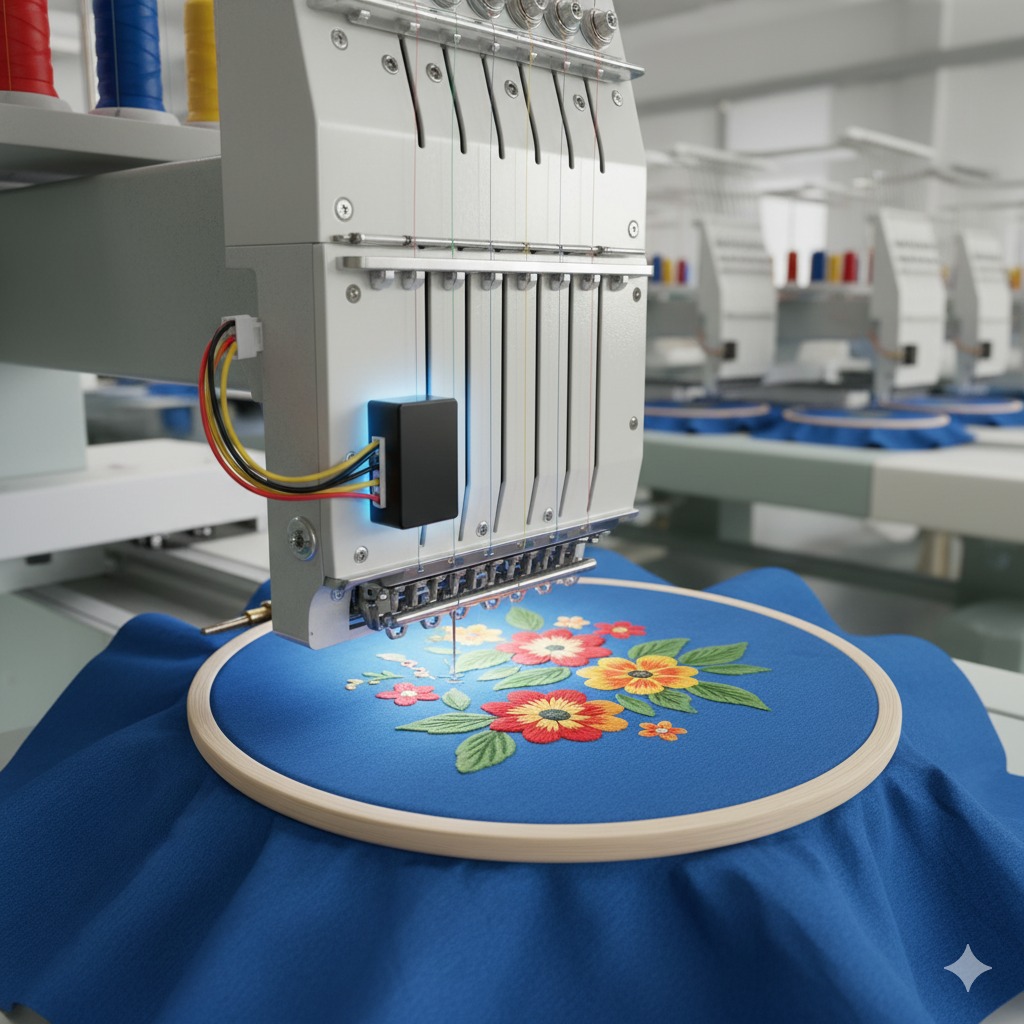In commercial embroidery production, accuracy and timing are critical for achieving flawless results. One of the most essential yet often overlooked components in an embroidery machine is the needle position sensor. This sensor ensures the machine always knows the exact position of the needle, allowing for smooth operations, precise stitch placement, and synchronized trimming.
At 360 Digitizing Solutions, we supply high-quality needle position sensors that are compatible with major embroidery machine brands like Tajima, Barudan, SWF, and Brother. This detailed guide will explain what a needle position sensor is, why it is important, how to detect problems early, and what to consider when purchasing or replacing one.
What is a Needle Position Sensor?
A needle position sensor is an electronic device mounted on or near the main drive shaft of an embroidery machine. Its job is to detect and communicate the rotational position of the needle to the machine’s control system.
This feedback ensures the needle always stops at the correct up or down position. This is crucial because embroidery machines rely on precise synchronization between the needle, hook, trimmers, and thread feeders. Without a properly functioning sensor, the machine cannot perform trimming, color changes, or accurate stitching.
Key Responsibilities of a Needle Position Sensor
- Detects Needle Position: Constantly monitors the needle’s rotational angle.
- Synchronizes Motion: Ensures the hook timing and needle movement stay perfectly aligned.
- Supports Automatic Trimming: Sends the correct signal to cut threads at the right moment.
- Prevents Misstitches: Stops the needle in a safe position to avoid thread breaks or needle crashes.
Types of Needle Position Sensors
There are three main types of needle position sensors used in embroidery machines:
1. Magnetic Needle Position Sensor
Uses magnets and hall-effect sensors to detect needle position. They are robust, highly durable, and commonly used in industrial embroidery machines.
2. Optical Needle Position Sensor
Uses an optical disc and light sensor to detect changes in needle position. Optical sensors are very precise and offer fast response times, making them ideal for high-speed operations.
3. Encoder-Based Position Sensor
Uses high-resolution encoders to provide real-time feedback. These are often integrated with the main drive servo motor for ultra-precise positioning.
Why the Needle Position Sensor Matters
A properly functioning needle position sensor has a direct impact on your machine’s performance:
- Stitch Accuracy: Correct positioning prevents skipped stitches and misalignment.
- Thread Management: Essential for proper trimming and color change sequences.
- Reduced Downtime: A faulty sensor can stop production completely.
- Machine Longevity: Prevents unnecessary mechanical stress caused by improper stopping.
Signs of a Faulty Needle Position Sensor
Recognizing early symptoms of failure can save you from expensive downtime. Look out for:
- Needle stops at random positions instead of fully up or down.
- Thread trimmer fails to engage or trims at the wrong time.
- Frequent error codes related to needle or head position.
- Increased thread breaks and inconsistent stitching.
If these issues persist, replacing the needle position sensor is usually the most reliable solution.
Installation and Maintenance Tips
- Follow Manufacturer’s Guide: Always refer to the machine manual for sensor alignment instructions.
- Inspect Wiring and Connectors: Loose or damaged connections are common causes of sensor malfunction.
- Keep Clean: For optical sensors, dust or oil buildup can interfere with performance.
- Test After Installation: Run a slow test cycle to ensure the needle stops correctly before resuming production.
Compatible Embroidery Machine Brands
Our needle position sensors are compatible with all major embroidery machine brands, including:
- Tajima – Widely used in professional and industrial setups.
- Barudan – Known for exceptional durability and precision.
- SWF – Excellent for high-volume production environments.
- Brother & Toyota – Ideal for small to mid-sized embroidery businesses.
Why Buy from 360 Digitizing Solutions
At 360 Digitizing Solutions, we provide:
- Genuine OEM & High-Quality Compatible Sensors
- Technical Support for Installation & Troubleshooting
- Affordable Pricing with Bulk Purchase Options
- Worldwide Shipping & Reliable Warranty
Our goal is to keep your embroidery machine running smoothly with high-quality parts that minimize downtime and maximize efficiency.
Conclusion
The needle position sensor is a small but crucial component that ensures your embroidery machine delivers accurate, consistent results. From precise needle stopping to perfect synchronization, it is an essential part of every production line. Regular maintenance and timely replacement of faulty sensors will save you money, reduce downtime, and improve stitch quality.
Explore our full range of needle position sensors at 360 Digitizing Solutions and get expert assistance to find the right match for your embroidery machine.





